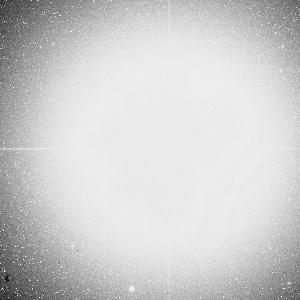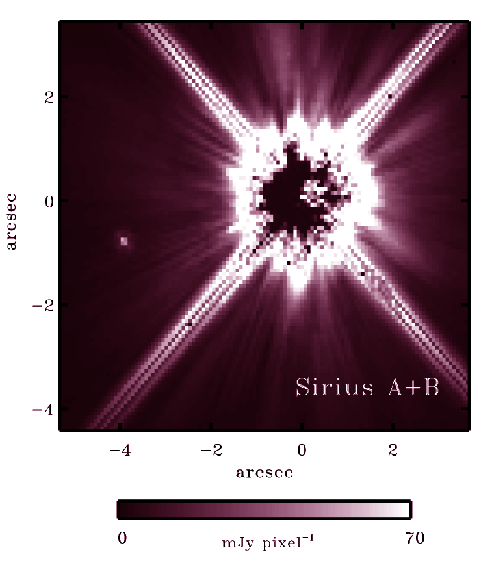Sirius fotoğrafları
The arrow is pointing to white dwarf, Sirius B, next to the large Sirius A.

The image is actually the center of a massive burnt out region in the underlying photographic plate. We’re looking at Sirius! A big (40″) telescope, extremely sensitive emulsion and long exposure don’t mix well with the brightest star in the sky. The scattered light from Sirius is still affecting the data over this entire square degree but at least at this scale we can see the cause and at the edges we can begin to pick up other objects in the field. So don’t expect to see very bright stars in most of the optical surveys. They are a billion times brighter than the objects that these surveys were intended to detect.
The Brightest Star in the Sky Imaged with the World's most Expensive Telescope

This is an image of Sirius A and B taken with the NICMOS coronagraph on the Hubble Space Telescope as part of a search for exozodiacal dust and faint companions around nearby stars (Kuchner and Brown, 1999). At this wavelength, 1.1 microns, Sirius A is about 10.2 magnitudes brighter than the white dwarf, Sirius B, which is visible about 3.8 arcseconds to the left of Sirius A. This image is a sum of 50 exposures lasting 0.6 seconds each.